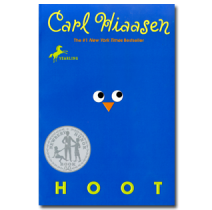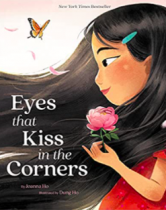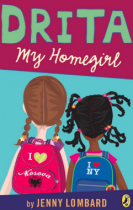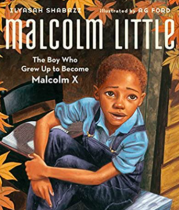This week marked the home-stretch of our personal narrative essays. On Monday we spent the day reviewing the importance of dialogue and how to use quotations properly. I admit that I probably should have spent at least two days going over this in detail. However, after 40 minutes, I could tell that my students could not take any more dialogue examples and thus, I decided to move on to the topic of imagery.
On Tuesday, we spent all day as artists in the classroom. We explored the simile, the metaphor, personification, alliteration and the different senses. During the second half of class the students rotated through four different stations. One of the stations involved having them reach into a paper back and use four of the most sophisticated adjectives they could think of to describe the object they were touching. The students seemed to enjoy the activities and many of them were forming some pretty impressive metaphors and similes as well.
In addition to the centers, I lead a couple of group examples explaining how I would go about using the thesaurus to replace common adjective such as “good” and “bad.” Afterwards, I sent the students to their respective cadet work stations and the began to revise the three body paragraphs they had written for homework the night before. I have now forced myself to realize that I have to differentiate instruction for each of my students in order for them to get the most out of this writing class. Thus, I also have different personal expectations for each of my students. One of my students is an advanced writer so she spent her 15 minutes using the thesaurus to replace commonplace words with more sophisticated words. However, another student had to rewrite an entire body paragraph because he was repeating what he had said before instead of thinking outside of the box. Some of my students need me to sit with them as they write down their ideas and other students do not.
It is this diversity that also made me realize it probably wasn’t the best idea to force my students to write about a single prompt. Originally, I had given the same prompt to each of my students and asked them to brainstorm ideas. Unfortunately, a lot of my students did not connect with the prompt and so they wrote about something they weren’t entirely passionate about. The next day, I decided to give each student a sheet of paper with at least fifteen different ideas. Almost all of the students changed from the original prompt to a different prompt and wrote about something they were excited about. Two of my students were interested in writing about their future careers. Another one of my students found the topic of procrastination to be particularly interesting. Although it was difficult to keep track of what all of my students were writing about, I kept myself organized with an excel spreadsheet and wrote down goals for each of them. Their writing greatly improved and they began to have fun during the writing process!
I think one of my best lessons this week was the “Summerbridge Revision Extreme Makeover Edition.” I brought in my karaoke machine from home and spoke into the microphone as I was introducing each topic. This lesson was divided into five mini lessons: organization of paragraphs, focus, repetitive sentences, varying sentence lengths and varying sentence beginnings. Although this was somewhat of a high-school/college level lesson my students truly took their writing to the next level. Each of them spent the remaining 15 minutes of class revising their paragraphs using the checklist I provided for them. I challenged them to think critically about their essay, to think about the details but also look at the whole picture. I left this lesson with a smile on my face feeling extremely energized.
An important lesson I learned this week is that it is good to have high expectations for your students, but not so high that they become frustrated with the task you have given them. At the beginning of this week I was going to ask each student to type up their own essay until I realized that more than half of my students didn’t even own a computer at home. Thus, I spent my recesses and my nights typing up their essays and their continued revisions. Interestingly, I found that when I types the essays using fourteen point font, the students were able to detect their mistakes a lot easier. It was a time-consuming process, but it definitely improved their writing and allowed them to see their work more clearly. The second lesson I learned is that students truly hate to revise and edit their work. One of my students simply couldn’t understand why I was torturing them with this ‘nonsense.’ There were days when many of them were not motivated to look at their essay again and add in imagery or fix their conclusion. Nevertheless, I pushed them to keep going despite their groans.
I have learned to separate their attitude from my attitude. This is helpful to both parties. They may not be fascinated about an assignment I ask them to complete, but as long as I remain positive it prevents the situation from becoming worse. Also, even though they don’t care to admit it, students want to be pushed. What kind of teacher would I be if I let them do whatever they wanted? Not a very good one. What mattered is that at the end of this process they saw the results due to their hard work and they came to realize that achieving success is not always easy. Writing is a never ending process. Something can always be improved.
However, the most important lesson I learned this week came from one specific student. In total, I have fifteen students I have to keep track of. Thus, one would think that it is easy to give each student individual attention. However, with the fast paced busyness of the day, this is not the case. I realized at the very end of the personal essay process that I had let one student down. She was an extremely competent student which is probably why I assumed she was doing just fine. Unfortunately, she had been having a really hard time with her personal narrative. Somehow, she had missed the fact that they had been allowed to choose from another prompt that interested them as long as they cleared it with me. So this whole time she had been writing about a bullying experience that she wasn’t very passionate about. I took her aside and apologized profusely for not knowing that she had been having difficulties with her essay. We brainstormed together and found a creative way to add in two or three more stories without having to change the entire essay. Then, I began to think. I cannot imagine what it is like to teach 30 students at once. And we wonder why it is that so many students slip through the cracks! I have made a promise to myself that I never want to let something like this happen again. Every student deserves the very best education they can get.










